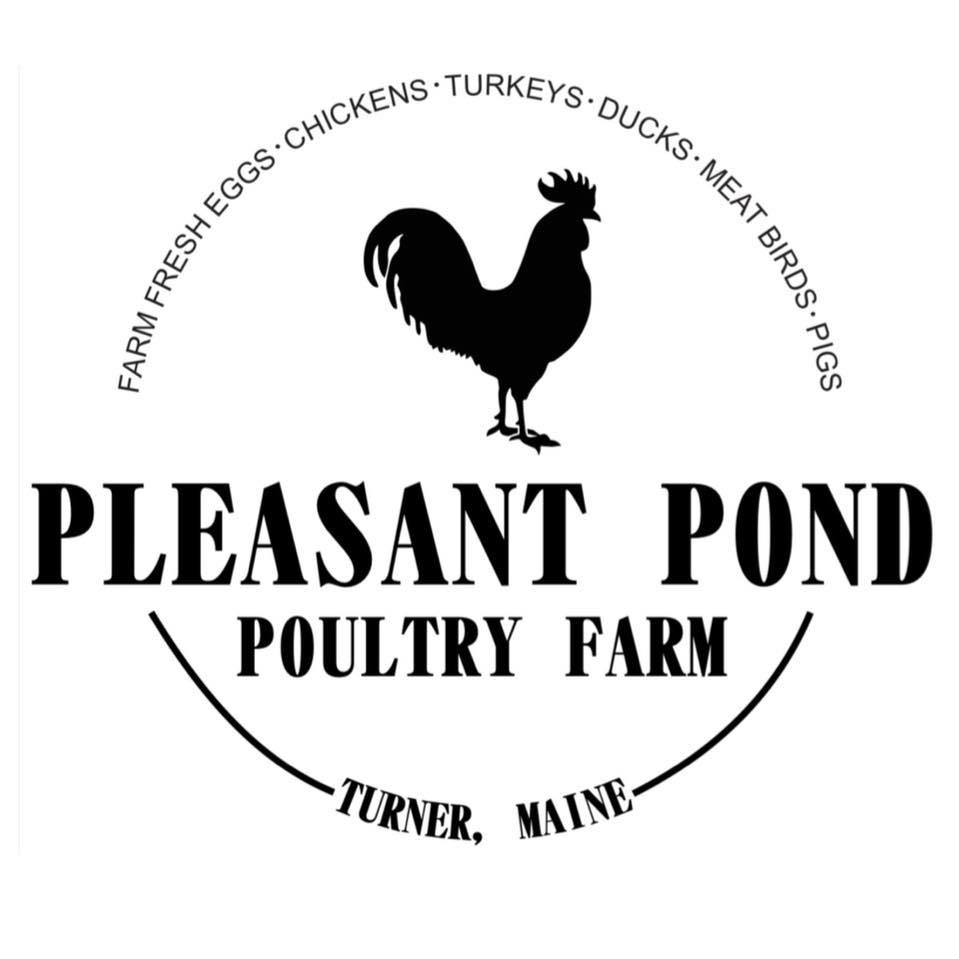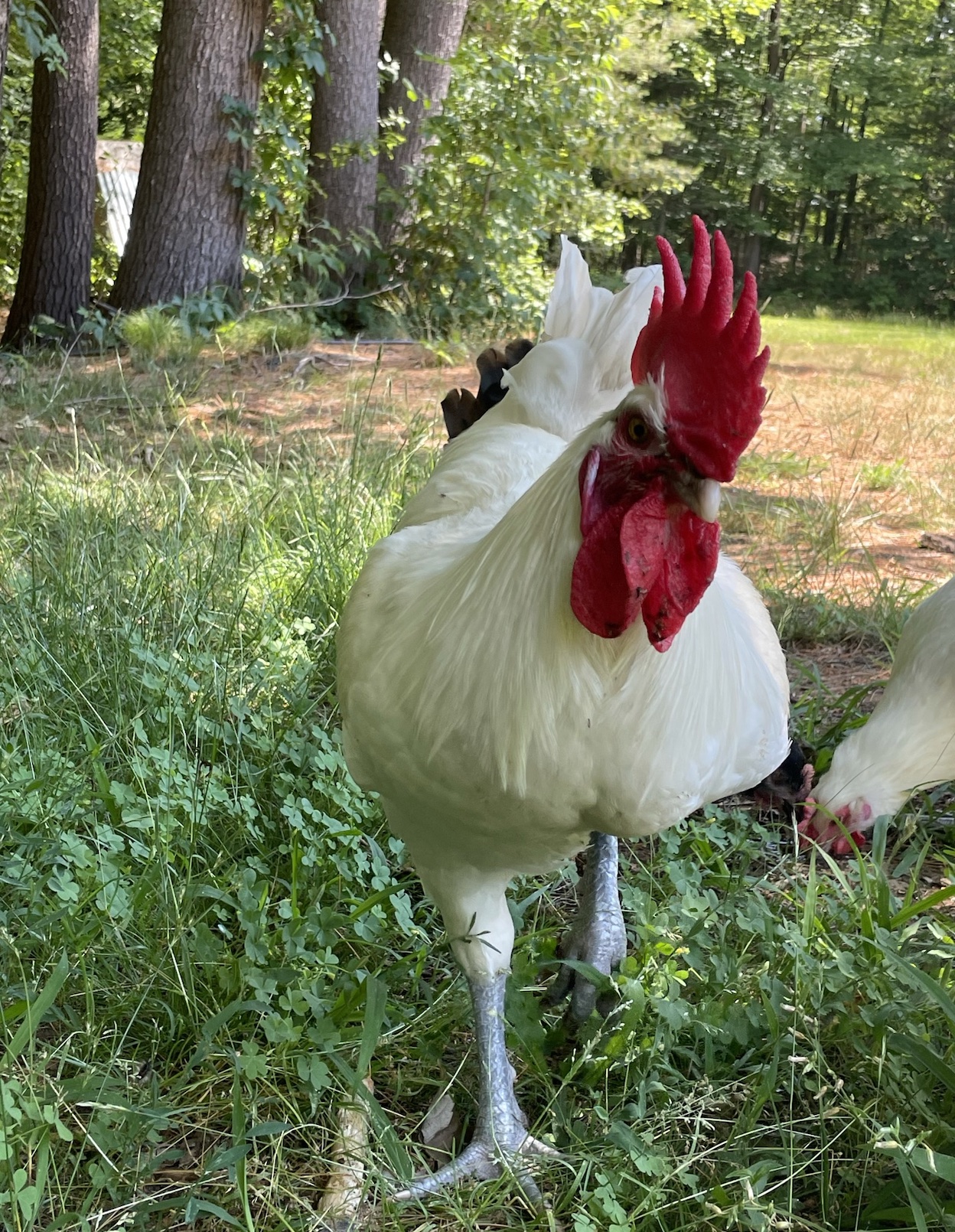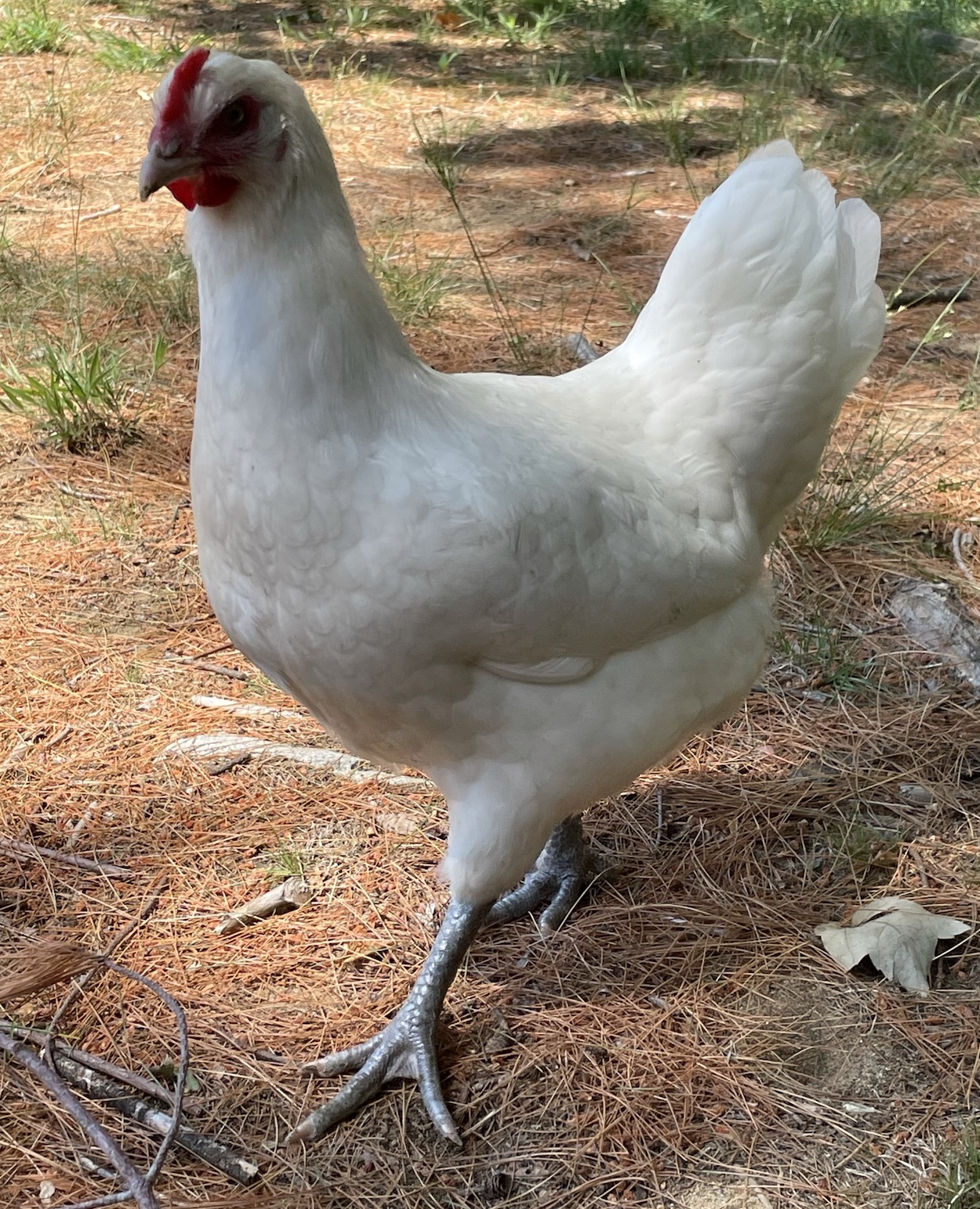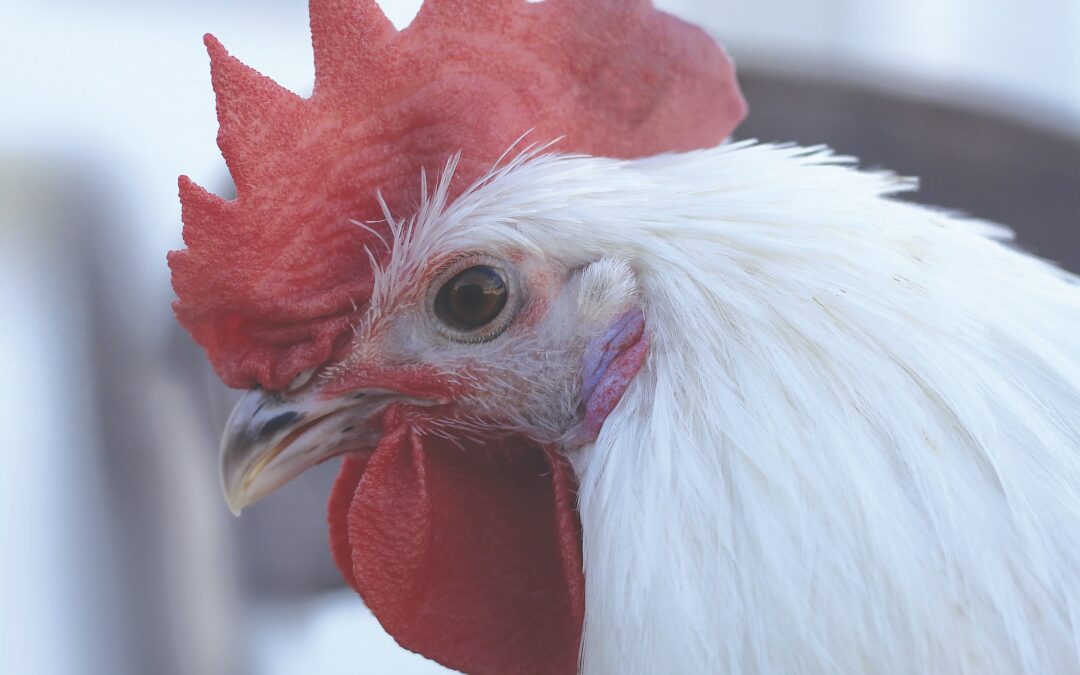Erik and Katie Gordon’s farm, Pleasant Pond Poultry, sits on 5.5 acres in picturesque Maine. With their two young daughters in tow, the family raises rare breed chickens, Heritage turkeys, and pigs. Pleasant Pond Poultry offers chicks, laying hens, and pastured-raised meat and eggs for sale locally. They have also recently partnered with Poland Provisions, a local cafe and general store, where customers will be able to purchase Pleasant Pond pork, Thanksgiving turkeys, pastured chicken (including American Bresse), and fresh eggs.
Gordon intentionally raises a small number of poultry breeds on his farm, including the American Bresse. Currently, he is working on to strengthen his flock and help to improve the lines available here in the U.S. As a small family operation, he notes that it is important to manage the quality of his birds over the number of breeds he works with.

For more information on Pleasant Pond Poultry Farm, visit PolandProvisions.com or click the Facebook or Instagram links below.
Erik and Katie Gordon’s farm, Pleasant Pond Poultry, sits on 5.5 acres in picturesque Maine. With their two young daughters in tow, the family raises rare breed chickens, Heritage turkeys, and pigs. Pleasant Pond Poultry offers chicks, laying hens, and pastured-raised meat and eggs for sale locally. They have also recently partnered with Poland Provisions, a local cafe and general store, where customers will be able to purchase Pleasant Pond pork, Thanksgiving turkeys, pastured chicken (including American Bresse), and fresh eggs.
Gordon intentionally raises a small number of poultry breeds on his farm, including the American Bresse. Currently, he is working on to strengthen his flock and help to improve the lines available here in the U.S. As a small family operation, he notes that it is important to manage the quality of his birds over the number of breeds he works with.

Photo (above) courtesy of Pleasant Pond Poultry
Breed Characteristics of the American Bresse
Gordon is a wealth of knowledge when it comes to the unique and popular American Bresse — from the breed’s characteristics, to their French foundations and very specific feeding protocols. “They [are] up there among my favorites. I have a fascination with trying to get them right,” Gordon says when asked how he likes the breed compared to others he raises.
He characterizes the American Bresse temperament as a bit skittish, but overall an excellent bird for those who raise them as farm stock. Though their personalities don’t make for the best pet chickens, he clarifies they are not as flighty as a Leghorn or Legbar. In his experience, the American Bresse roosters are a bit rough when breeding, but are pleasant to work with because they aren’t overly aggressive.
Another notable trait is their lack of broodiness. “They haven’t been at all broody. Not one yet, which is encouraging. However, I said that about our Marans, and this year, I have one that is unbreakable,” Gordon says.
He considers the American Bresse to be a triple-purpose bird: eggs, meat, and flavor. While the American Bresse is known for its meat, Gordon says the flavor is so outstanding that it puts them in a third and separate category apart from other meat bird varieties in many enthusiasts’ opinions. As layers, his flock of hens are reliable, with about 75% providing him with beautiful light cream-colored eggs each day — or 250+ eggs per year.
American Bresse: A Cut Above the Rest
Cornish Cross are a common and popular entry point into the world of meat birds, as they are fast growing and produce a lot of meat in a short amount of time. However, connoisseurs have argued their flavor and texture is not as desirable when compared to other meat breeds. Murray’s Big Red Broilers, along with Freedom Rangers, are often said to be better tasting and more tender than Cornish Cross. And, though they are not table-ready in eight short weeks, they are still ready to process in a relatively short time frame.
More recently, many have turned to Heritage breeds as meat birds for their health and natural reproduction, but many of these birds do not produce nearly the amount of meat that people are accustomed to getting from a Cornish Cross. Dark Cornish are thought to be some of the best Heritage meat chickens, but Gordon claims that the American Bresse have much better meat and way better flavor, putting them at the very top of the meat bird hierarchy. Though French protocols are extremely strict and call for processing at the 16 week mark, those who raise this breed at home can enjoy a bit more flexibility. Gordon notes that they can be processed as early as 16 weeks, or as late as 6 months, depending on what each person chooses for their individual needs.
The Bresse is known for its marbling, a quality that isn’t common among poultry. Essentially, marbling is fat deposits spread throughout a cut of meat – breast meat, in this case. Bresse have small, delicate bones, making them easy to dress and part out. Their meat is incredibly flavorful, with more dark meat than white. In fact, when raised properly, they often have dark meat in areas where white meat is typically prevalent.

Photo (above) courtesy of Pleasant Pond Poultry
Forage and Exercise: A Magic Combination
Gordon stresses that the marbling that Bresse are known for doesn’t just happen overnight. This phenomenon is not only attributed to the way that the birds are raised, but specific breeding lines are more prone to marbling, too. The French observe strict breeding protocols, focusing heavily on preserving specific bloodlines and characteristics in order to pass on marbling tendencies to subsequent generations.
As birds reach maturity, they follow a complex feeding program that relies heavily on a balance between foraging and protein intake until their final weeks, when they are exclusively fed milk-soaked grains.
Once the chicks hatch, the real work begins. Gordon refers to their first few weeks of life as the establishment period. During this time, he gives his Bresse chicks starter grain or corn soaked in milk for the first four to five weeks. “Like many other breeds, the quality of the time a chick spends in the brooder holds a tremendous amount of impact on the end product of the bird,” he advises.
Gordon refers to his next phase of raising these birds as the foraging period. Ideally, he prefers to have them outside on grass relatively early to encourage foraging throughout his pastures, which contain a mix of clover and strawberries, and, of course, lots of insects. However, he states there is some variability in what is available throughout the season. During the foraging period, Gordon still offers low-protein grains such as barley, but encourages his Bresse to forage so that they can get a majority of their nutrient intake from the land.
For the flock’s final 2-4 weeks, Gordon drastically changes his routine. He encourages a more sedentary lifestyle by penning his birds, which prohibits them from moving around and foraging as in the previous stage. Instead, during this phase, they are fed corn soaked in milk. The lactic acid and calcium help to prevent their meat from toughening during this last stage of growth. The sudden change from lots of exercise to lack of movement encourages their fat to essentially soak into their musculature, leading to the classic Bresse marbling.
Timing is Everything
Because Bresse are a Heritage breed, they take longer to reach maturity than contemporary commercial broilers. Though some people carry their flocks to six months, Gordon prefers to process his Bresse around 16 weeks, which requires a bit more work when raising them with the strict French protocols. By doing this, he allows them to be processed within a similar window of time as the Big Red Broilers.
Gordon also notes that movement and feed both play a crucial role in raising healthy Cornish Cross, too. Gordon has successfully carried his Cornish Cross past the traditional eight week mark by practicing limit feeding and encouraging a lot of movement, stating that in his experience, overeating really affects the health and lifespan of commercial broilers.
Standard Methods with Outstanding Results
Though Gordon is very meticulous about incorporating French protocols in the way his own Bresse are raised, he also notes that standard feeding methods can still produce an outstanding flavor. “A normal diet is doable, and you can still get a really good quality product,” he says.
“These are the best tasting chickens I have ever had — even my foodie friends agree. Even when I have raised Bresse similarly to a Cornish Game Hen, I have been told that it’s the most amazing thing people have ever eaten,” Gordon states.

Photo (above) courtesy of Pleasant Pond Poultry
Looking to the Future
Unlike many Heritage breeds with well-established lines that date back a century or more, the Bresse are quite new to the United States. “The breed isn’t fully onboarded here, and the genetic diversity is relatively low,” says Gordon. “The breed profile in the U.S. is not where it should be, and more lines are needed for genetic diversity.” Many of the flocks across the country to date originated from the bloodlines imported into the U.S. in 2017.
The threat of food insecurity and current world events have led people across the U.S. to look for ways to take better control of their food sources. While a standard broiler is delicious and straightforward, the Bresse reputation for flavorful marbled meat in a dual-purpose and sustainable breed has led to a lot of interest as the trend in homesteading continues to rise. Even backyard enthusiasts and urban flock keepers can appreciate the American Bresse for their delicious eggs and foraging abilities. Because of their many uses and superior qualities, there is a bright future for this remarkable breed. As the American Bresse continues to gain popularity, they will so even more as new bloodlines are imported and numbers continue to increase across the country.
“Of course I hope that other American Bresse breeders continue to focus on selective breeding and protecting the qualities that make them the delicacy that they are, while also working towards greater genetic diversity. But aside from all that, this breed represents a lot more on our farm. Even if we never sold to another customer, we would still live this way,” Gordon explains. “The ability to care for and respect each bird from hatch to table is a huge part of our lives. We’re teaching our daughters to be part of an important process, and we’re sharing food that we’ve raised ourselves with people we love. There’s nothing more important than that for us.”
Photos courtesy of Erik Gordon. Connect with Pleasant Pond Poultry on Facebook and Instagram.

For more information on Pleasant Pond Poultry Farm, visit PolandProvisions.com or click the Facebook or Instagram links below.

Notes from an Expert
Tom Watkins on breeding for genetic diversity
“Ideally, you want a minimum of three breeding pens. Within each breeding pen, you need at least 50 hens and 6 roosters. That is the minimum number of birds I recommend for close breeding while keeping enough genetic diversity to not cause problems for about 10-20 years.“
Read more about breeding for genetic diversity here.

